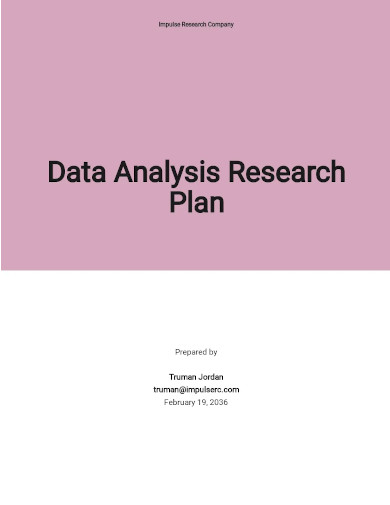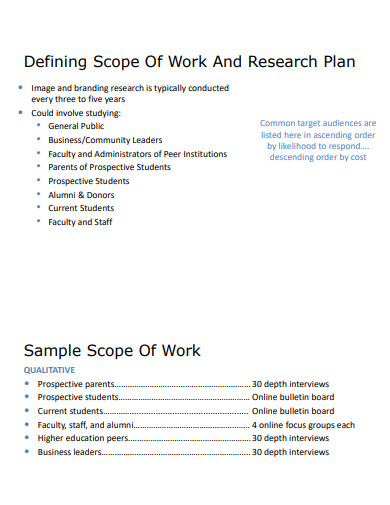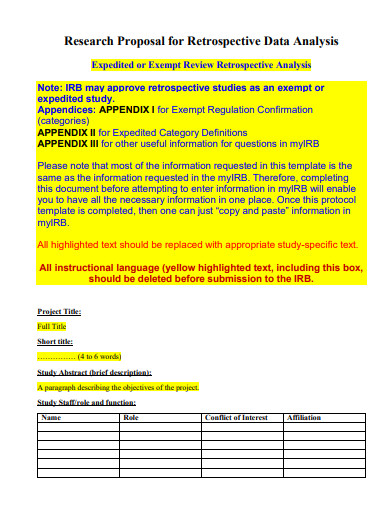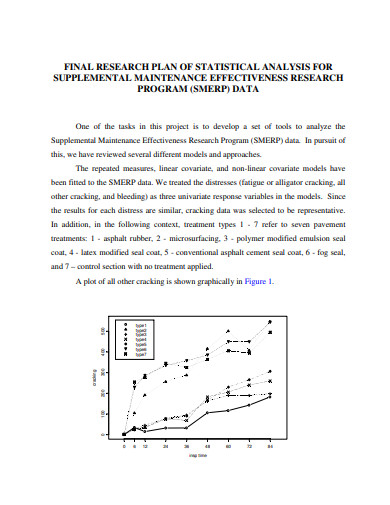So you’ve finally gathered all the necessary data needed to commence your research analysis through your findings to prove your hypothesis. However, an important, yet intimidating question always pops up when it’s time to analyze the gathered data, have you been gathering the appropriate data for your research? Do you know what types of analysis should be done to properly study all the crucial information from your data so you can come up with a good conclusion to your entire research? Do you know what type of data have you gathered? Just these questions alone can make your head spin, and it’s more complicated to deal with this if you haven’t thought about this before your data gathering process. That’s why you need a solid plan on how to properly analyze your data. Read the article below to know how to make one.
3+ Data Analysis Research Plan Samples
1. Data Analysis Research Plan

2. Marketing Data Analysis Research Plan
3. Sample Data Analysis Research Plan
4. Data Analysis Research Plan Example
What is a Data Analysis Plan?
A data analysis plan is a useful guide for researchers on knowing how they’re going to organize and analyze the data they’ve gathered and achieve the objectives they plan to accomplish such as providing concrete and appropriate answers for their top research problems or questions, or comparing the different types of data from each other.
How to Do a Data Analysis in Research
Data Analysis in Qualitative Research
Doing data analysis on qualitative data research is different from quantitative data because the data gathered are made up of words, images, objects, and symbols. To do the appropriate analysis for this type of data, the methods mentioned below are usually done to come up with the right answers to address their research questions correctly:
- Finding Patterns: Researchers study the available data and find any repetitive or commonly used words, also known as keywords. The researcher will then try to comprehend the concept of the data by analyzing the context of how the keywords are used. This method is widely used by researchers dealing with qualitative data research.
- Content Analysis: Another common method for qualitative data analysis, content analysis is done to analyze the documented information from text, images, and physical items, depending on the data that has been gathered. A series of research questions should be made first to do this analysis.
- Narrative Analysis: Researchers analyze all the content they gathered from different primary sources for their research such as personal interviews, field observation, and surveys.
- Discourse Analysis: This method is used to analyze the interactions with people such as the social context of which or within the communication between the researcher and respondents that took place. Furthermore, discourse analysis focuses on the lifestyle and day-to-day environment of the respondents to obtain any possible conclusion.
- Grounded Theory: This type of theory is used to analyze the qualitative data to discuss and explain a particular phenomenon that took place or similar cases that occur in different settings that is relevant to the research.
Data Analysis in Quantitative Research
For quantitative data analysis, numerical data is the most common type of data that will be gathered to obtain results meaningful to the research. To analyze these, statistical techniques are used. There are two types of this method:
- Descriptive statistics: This method describes the features of the versatile data variables in the research. It helps presents the data in a meaningful way that the patterns used in the data will make it sense. Here are a few major types of descriptive analysis methods: measures of frequency, measures of central tendency, measures of dispersion, and measures of position.
- Inferential statistics: This method is used to make predictions about a larger population after the researchers collected a sample that represents the population and has been analyzed. It is done through estimating parameters, by taking statistics from the sample research data and demonstrates something about the population parameter or through hypothesis test by sampling research data to answer the survey questions made by the researchers for their respondents to answer.
FAQs
What are methods in data analysis that are commonly used in research?
These are the data analysis methods that are commonly used in research:
- Correlation: This is done when researchers are interested to understand the relationship between two or more variables, of their data.
- Cross-tabulation: This is done to analyze the relationship between multiple variables of the data they’ve gathered.
- Regression analysis: This is done to find any impact of independent variables on the dependent variables from your data.
- Frequency tables: This is done to test the varying degree between two or more variables in an experiment.
What are the types of data analysis?
The different types of data analysis are:
- Descriptive analysis
- Diagnostic analysis
- Predictive analysis
- Prescriptive analysis
Before you smooth out your plan, review once again your data gathering and analysis methods, and your findings. This will ensure that you didn’t leave any important details out that may negatively affect your data analysis method. To help you get started on your qualitative data analysis for your report, download our free sample templates provided above as your reference.
Related Posts
FREE 10+ Postgraduate Research Proposal Samples in PDF DOC
FREE 5+ Qualitative Research Proposal Samples in PDF DOC
FREE 10+ Academic Research Plan Samples and Templates in ...
FREE 15+ Research Flow Chart Samples in MS Word PDF
FREE 10+ Research Work Plan Samples in MS Word PDF
FREEE 10+ Exploratory Data Analysis Samples [ Python, Analytics ...
FREE 10+ Clinical Research Proposal Samples in MS Word PDF
FREE 11+ Data Management Plan Samples in PDF DOC
FREE 32+ Research Paper Examples in PDF MS Word
FREE 10+ Psychology Proposal Samples [ Clinical, Experimental ...
FREE 10+ Feasibility Analysis Samples [ Entrepreneurship ...
FREE 10+ Research Business Plan Samples & Templates in MS ...
FREE 10+ Research Analysis Report Samples in MS Word PDF
FREE 10+ Student Project Proposal Samples [ Management ...
FREE 10+ Sample Data Analysis Templates in PDF MS Word ...



